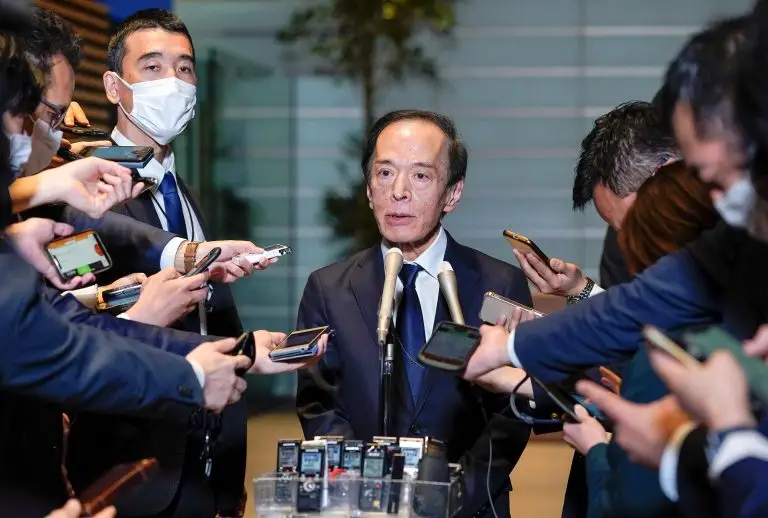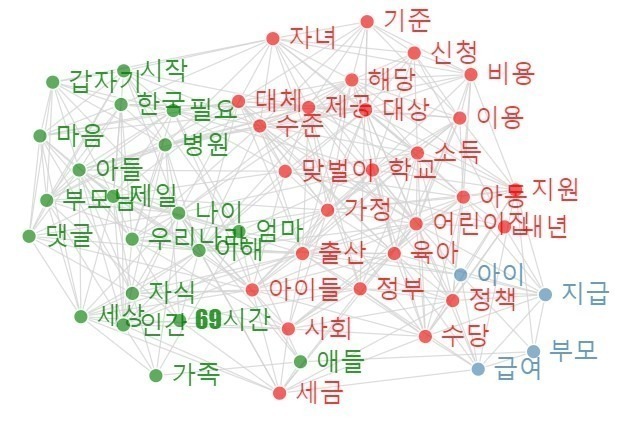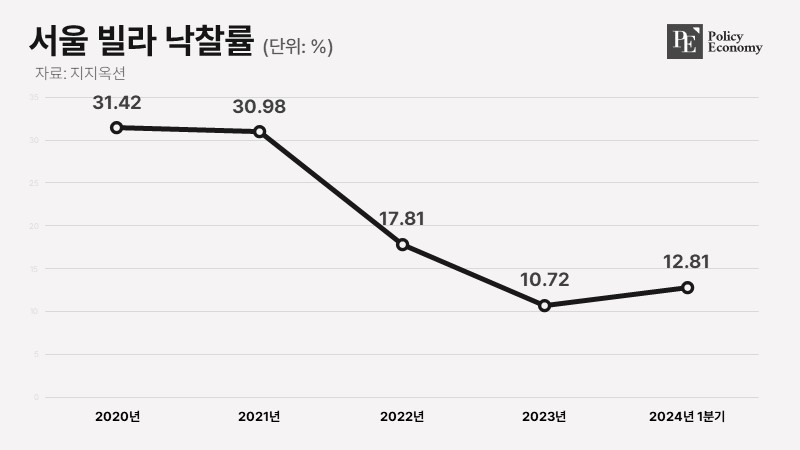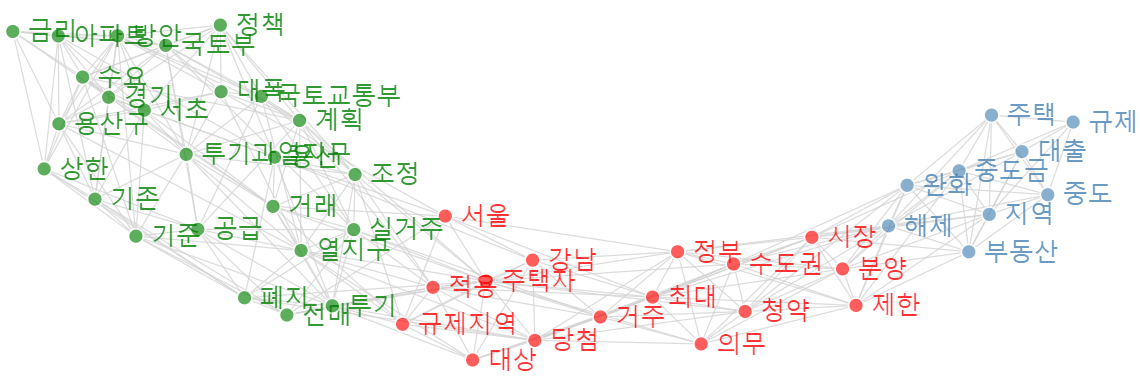[동아시아포럼] 기시다 총리의 경기부양책, 日 경제의 해법 될까?
인플레이션 대응 위해 17조 엔 규모 경기부양책 발표 내각 개편, 통일교 해산 등 조치에도 지지율 연일 하락 11월 20%대 지지율, 자민당 재집권 이래 최저치 기록
[동아시아포럼]은 EAST ASIA FORUM에서 전하는 동아시아 정책 동향을 담았습니다. EAST ASIA FORUM은 오스트레일리아 국립대학교(Australia National University) 크로퍼드 공공정책대학(Crawford School of Public Policy) 산하의 공공정책과 관련된 정치, 경제, 비즈니스, 법률, 안보, 국제관계에 대한 연구·분석 플랫폼입니다. 저희 폴리시코리아(The Policy Korea)와 영어 원문 공개 조건으로 콘텐츠 제휴가 진행 중입니다.
기시다 후미오 일본 총리가 내수 진작과 투자 촉진을 위해 17조 엔(약 151조원)에 이르는 경기부양책을 발표했다. 이는 고물가 상황에서 내각의 지지율 하락에 대응하기 위한 조치다. 지난해 6월 59%로 정점을 찍었던 기시다 내각의 지지율은 지난달 29%를 기록했다. 기시다 내각 출범 이후는 물론, 2012년 12월 자민당 재집권 이래 최저치다.

日 경제 여건 고려할 때, 경기부양책 단기효과에 그칠 것
기시다 내각의 지지율이 연일 하락세를 이어가고 있는 가운데, 자민당은 내각의 이미지 쇄신을 위해 칼을 빼 들었다. 지난 9월 각료 19명 중 11명을 새로 임명하고 여성 각료를 2명에서 5명으로 늘리는 등 대대적인 내각 개편에 이어 지난달에는 아베 총리 피살 사건으로 불거진 통일교 문제와 관련해 법원에 교단 해산명령을 청구했지만, 지지율은 좀처럼 회복되지 않고 있다. 최근의 여론조사 결과를 보면 일본의 유권자들은 나라의 사회·경제 문제를 해결하는 못하는 정부의 역량에 점점 더 환멸을 느끼는 것으로 나타났다.
기시다 내각 지지율 하락의 가장 큰 원인은 고물가로 임금 인상률이 물가상승률에 못 미치면서 가계 구매력이 심각하게 약화됐기 때문이다. 이번에 발표한 17조 엔 규모의 경기부양책은 디플레이션(경기 침체 속 물가 하락)을 극복하고 경제를 정상화하는 것을 목표로, 저소득층을 비롯해 30년 이상 경기침체로 고통받아 온 외곽 지역을 지원하는 데 초점을 두고 있다. 특히 1가구당 평균 10만 엔(약 90만원) 규모의 감세 패키지가 시행되는데 해당 패키지에는 1인당 4만 엔(약 38만원)의 일시적인 세금 감면과 1인당 7만 엔(약 62만5,000원)의 저소득층 대상 지원금이 포함된다. 이와 함께 소비자 물가 상승을 억제하기 위해 휘발유와 공공요금에도 보조금을 지급할 계획이다. 지방정부의 재정 지출과 정부보증대출을 합치면 이 패키지의 투입되는 재원은 총 21조8,000억 엔(약 196조원)에 이른다.
다만 일본을 둘러싼 금융·통화시장의 여건을 고려할 때 이전의 수많은 경기부양책이 그랬듯 이번 부양책도 단기적인 효과에 그칠 가능성이 높다. 그런 만큼 경기부양책이 성과를 거두기 위해서는 해묵은 문제부터 해결해야 한다. 현재 일본은 저금리 기조가 지속되면서 기업의 생산성이 악화되고 있다. 당초 일본 정부는 2023~2026년 연평균 경제성장률을 1.2%로 예상했지만 이는 지나치게 낙관적인 전망이다. 지속적인 확장 재정과 완화 기조의 통화정책은 마이너스 성장을 초래한 데다 소득격차 등 일본 경제의 근본적인 문제가 전혀 개선되지 않았기 때문이다.
인플레이션에 소비 위축, 저금리 정책으로 엔저 현상까지
단기적으로는 세금 감면이 국내 소비 증진에 긍정적인 영향을 미칠 수도 있다. 하지만 현재 일본은 장기간 인플레이션으로 실질 임금 하락하면서 성장세가 지속적으로 약화되고 있다. 경기부양을 위한 추가 지출과 세수 감소로 인해 재원 조달이 불투명해진 상황에서 정부 부채 역시 더 늘어날 수밖에 없다. 특히 기시다 총리의 경기부양책은 재원의 3분의 2를 부채에 의존하고 있어 향후 거시경제 정책에 대한 불확실성이 확대되고 있으며 이는 소비와 투자 감소로 이어질 공산이 크다.
더욱이 코로나19 팬데믹 이후 글로벌 통화시장의 상황이 바뀌었다. 아베 총리 시절에는 미국 연방준비제도(Fed) 등 주요국 중앙은행들이 저금리를 유지한 만큼 일본 정부의 확장 재정은 전 세계 통화정책과 조화를 이룰 수 있었다. 하지만 지난해 3월부터 Fed는 물론 유럽중앙은행(ECB)의 금리 인상이 이어졌고 이로 인해 일본은행(Bank of Japan, BOJ)의 통화정책도 딜레마에 빠졌다. 정부가 발행한 국채가 GDP(국내총생산)의 260%에 달하는 상황에서 BOJ가 Fed의 통화긴축에 동조할 경우 일본 경제는 큰 타격을 입을 수밖에 없다. 금리가 오르면 정부의 이자 부담도 늘어나기 때문이다. 이뿐 아니라 BOJ 보유국채의 평가 손실은 납세자에게 추가적인 부담을 줘 소비시장이 위축되고 내각의 지지율은 더욱 하락할 가능성이 높다.
이렇다 보니 BOJ는 가급적 금리를 동결해 제로에 가까운 수익률 곡선을 유지하는 전략을 취하고 있다. 알려진 바에 따르면 BOJ를 비롯해 일본의 투자자들은 자국에서 저금리로 자금을 조달해 이자율이 높은 미국 국채 등에 투자하는 캐리 트레이드(carry trade) 방식을 활용하고 있다. 실제 미 재무부의 10년 만기 국채의 수익률은 4.23%인데 반해 일본 10년 만기 국채 수익률은 0.77%에 불과하다. 하지만 이는 엔화 가치 하락의 원인으로 작용했다. 현재 엔화는 지난 2021년 1월 이후 40% 이상 가치가 하락했다. 결과적으로 Fed가 고금리 기조를 장기간 유지할수록 엔화 환율 하락 압력이 계속됐고 이로 인해 원자재를 포함한 수입품 가격이 지속적으로 오르면서 에너지와 식품 가격이 상승한 것이다.
금리 인상 여부 딜레마, 불평등과 저성장 먼저 해결돼야
현재 기시다 총리는 기로에 서 있다. 기시다 총리의 택할 수 있는 선택지로는 ‘트러스 시나리오(Truss scenario)’와 ‘에르도안 시나리오(Erdogan scenario)’가 있다. 지난해 9월 취임한 엘리자베스 트러스 영국 전 총리는 재원 마련 방안도 준비하지 않은 채 감세 정책을 발표한 탓에 전 세계 통화시장이 크게 출렁였다. 파운드화 가치가 폭락했고 국채 금리가 폭등했다. 이에 잉글랜드은행(Bank of England, BOE)은 자국 연기금의 파산을 막기 위해 수십억 파운드의 긴급 매입을 실시해야만 했다. 결국 트러스 총리는 취임 45일 만에 자리에서 물러났다. 만약 BOJ가 트러스 총리와 같이 엔저 회복과 인플레이션 억제를 위해 통화 긴축을 추진한다면, 재정 적자가 확대돼 정부 재정에 대한 신뢰를 잃을 수 있다.
반면 BOJ가 더 많은 국채를 매입할 경우에는 엔화 약세와 물가 상승이 가속화될 가능성이 높다. 엔화의 가치 하락은 수출 중심의 일본 대기업에는 도움이 되지만 소비자 물가 상승이 동반되는 만큼 대다수 국민에게 타격을 줄 수 있어 기시다 총리에게는 정치적 타격이 될 수 있다. 이는 레젭 타입 에르도안 튀르키예 대통령의 정책을 연상시킨다. 에르도안 대통령은 그간 고물가 상황에서 주요국이 금리를 올릴 때 저금리 정책을 펴며 금융시장에 혼란을 가져왔고 결국 튀르키예의 통화인 리라화는 사상 최저치를 기록했다. 즉 현재로서는 두 가지 시나리오 모두 일본에 매력적인 선택지는 아닌 셈이다. 기시다 총리에게 최적의 시나리오는 예상치 못한 금융위기가 발생해 Fed가 금리를 인하하는 것이다. 하지만 Fed가 금리를 인하해 ‘아베노믹스’가 ‘기시다노믹스’로 이어진다고 하더라도, 소득 불균형과 저성장 등 고질적인 사회 문제가 지속되는 한 일본 경제가 정상화되기는 힘들 것으로 보인다.
원문의 저자는 귄터 슈나블(Gunther Schnabl) 라이프치히 대학교(Leipzig University) 경제정책·국제경제학 교수입니다.

Is Kishida’s stimulus the cure Japan needs?
Japanese Prime Minister Fumio Kishida announced a new fiscal stimulus program in response to a fall in his cabinet’s approval rating. The approval rating, which peaked at 59 percent in June 2022 plunged to its lowest point of 29 percent in November 2023.

Despite a reshuffle of the cabinet aimed at strengthening female representation, it has proven ineffective in alleviating growing political discontent. Japanese ‘voters have grown increasingly disillusioned with the administration’s ability to address the country’s social and economic woes’. The reason for the political turmoil is higher inflation, which has painfully eroded the purchasing power of Japanese households, as wage increases have consistently lagged behind rising prices.
Kishida asserts that the new fiscal stimulus program — exceeding 17 trillion yen — aims to overcome deflation and put the economy back on track. The package includes temporary tax cuts of 40,000 yen (US$275) per person and payouts of 70,000 yen (US$480) to low-income households. Subsidies for gasoline and utility bills have been provided to dampen consumer price inflation. Together with spending by local governments and state-guaranteed loans, the size of the package amounts to 21.8 trillion yen (US$149 billion). While this initiative focuses on aiding low-income households and the regions outside the economic centres, which have suffered over three decades of stagnation, there are major problems to overcome.
Similar to numerous previous fiscal stimulus programs, the relief will only be short-term. The persistent low-interest rate in Japan keeps paralysing productivity gains of Japanese corporations. The government projects a growth rate of 1.2 per cent between 2023–26. The projection seems far too optimistic, as the fundamental economic problems of Japan, including negative growth and distribution effects of persistent monetary and fiscal expansion, remain unresolved.
Though tax cuts may have a positive impact on consumption, the persistent inflation continues to weaken growth through declining real wages. As the financing of the additional expenditures and lower tax revenues remains unclear, government debt is likely to increase further. With about two-thirds of Kishida’s fiscal stimulus relying on debt-financing, uncertainty about the future macroeconomic policy has increased. The situation could result in decreased consumption and investment.
The global monetary environment has changed. Under former prime minister Shinzo Abe, the combination of expansionary monetary and fiscal policy was sustainable, because other large central banks such as the US Federal Reserve kept interest rates low as well. With the US Federal Reserve continuing to increase the federal funds rate along with the European Central Bank since March 2022, the Bank of Japan is caught on the wrong foot.
If the Bank of Japan were to follow the monetary policy of the US Federal Reserve, the government’s interest rate payments on the immense stock of government debt — equivalent to more than 260 per cent of GDP — would hike. This could lead to blocked expenditure obligations and a further decline in Kishida’s approval ratings. Large valuation losses on the Bank of Japan’s substantial holdings of government bonds could impose an additional burden on taxpayers. This explains why the Bank of Japan continues to stick to its close-to-zero yield curve targeting.
The Bank of Japan’s approach has revived carry trades, allowing investors to raise funds at low costs in Japan and investing them, for instance, in US government bonds. The US Treasury bills with a 10-year maturity yield of 4.23 per cent, compared to the 0.77 per cent of 10-year Japanese government bonds. This has exerted strong depreciative pressure on the Japanese yen, which has lost over 40 per cent of its value since January 2021.
As the US Federal Reserve may keep interest rates high for longer, the depreciative pressure may persist. The continuous rise in the prices of imported goods, including raw materials, would contribute to an increase in energy and food prices.
Kishida faces a delicate situation and may be forced to choose between a Truss or an Erdogan scenario. If the Bank of Japan tightens money supply to strengthen the yen and contain inflation while the Japanese government maintains high deficits, financial markets may lose trust in the sustainability of Japanese government finances. Interest rates on Japanese government bonds could hike, in the same way as the United Kingdom’s interest rates hiked when former United Kingdom prime minister Liz Truss announced tax cuts without sufficient financing, coinciding with the Bank of England raising interest rates.
Alternatively, if the Bank of Japan buys more government bonds, both yen depreciation and inflation would accelerate, reminiscent of Turkey under President Recep Tayyip Erdogan. While the depreciation would benefit large export-oriented Japanese corporations, rising consumer prices would hurt major parts of the population, posing a political problem for Kishida. Facing unappealing scenarios, Kishida can only hope for a financial crisis in the United States that would force the US Federal Reserve to cut interest rates. In this scenario, a revival of Abenomics as ‘Kishidanomics’ could ensue, though Japan’s main economic problems — namely low growth and high inequality — would persist.



























